|
View as a webpage
|

Mojave Trails National Monument
|
|
ISSUE 840 - February 14, 2019
|
|
|
- 💗 Your Public Lands
- Wildlife
- Track the Bloom
- Headlines and Highlights
- BLM and DOI Highlights
- Wildlife Question of the Week
- Upcoming Events
|

#LoveYourPublicLands
Happy Valentine’s Day! We invite you to show your appreciation by remembering to respect and #LoveYourPublicLands. One way to truly display how much public lands mean to you is by following Tread Lightly and Leave No Trace principles. This means packing your trash out, staying on the trail, respecting wildlife, being aware of the impacts of your campfire and more. By practicing these acts of service to our public lands we help to sustain the health, diversity and productivity of public lands for the use and enjoyment of present and future generations. Here are some ways that you can continue to help ensure future generations will continue to enjoy public lands. (BLM California Facebook)
|

Love American Style: Happy Valentine's Day!
America’s public lands offer a romantic setting for any love story. Every year thousands get engaged, married, or simply enjoy our national parks, wildlife refuges and scenic wildernesses. Love is meant to be shared, and as a tradition on Valentine’s Day, we’re sharing heartfelt moments sent to us by you. Happy Valentine’s Day! (DOI video)
|
Upcoming travel plans? Please remember to check road conditions and closures. Travelers can also download the QuickMap app, quickmap.dot.ca.gov, or call 1-800-427-7623 for constantly updated highway information. (California Department of Transportation)
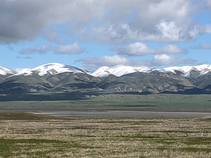
#TracktheBloom
This time of year there is a lot of #CAlove, especially with the much anticipated wildflowers or "#superbloom". We want to share updates from your public lands in California, specifically Carrizo Plain National Monument to help potential visitors know what to realistically expect when it comes to wildflower blooms.
As of February 13, 2019: Conditions are very wet on Carrizo Plain, another 1-3 inches of rain is anticipated for today and tomorrow, making the dirt portion of Soda Lake Road impassable.
|

California: Rare 'Super Bloom' Looks Promising, Could See Return of Wildflowers 'Thought to be Extinct'
California is on the cusp of witnessing a rare flourish of wildflowers to rival the so-called "super bloom" of two springs ago, which could be seen from space. In the right conditions, parks like the Carrizo Plain National Monument in the Central Valley—a few hours outside of Los Angeles—become awash with wildflowers in what the Bureau of Land Management described as an often “short-lived” but “breathtaking” sight. The flowers could return this year if the precipitation levels in the area nudge up slightly, Richard Minnich, a professor of earth sciences at UC Riverside, told KPBS. Combined with a years-long drought that obliterates grasses and weeds that take up nutrients, wildflowers can thrive. That includes elusive varieties like the desert five-spot that appeared in Death Valley after decades in a recent super bloom, according to Minnich. Even flowers thought to be extinct can reappear, he said. (Newsweek)
Related: Where to see Southern California wildflowers (TimeOut Los Angeles)
Related: A Little More Rain Could Bring Another Wildflower ‘Super Bloom’ To California (KPBS News)
|

Travelers Share Their Love of California
"We are always heartened to hear from visitors who are passionate about traveling to California, and any time we ask folks to share their #CAlove they are eager to respond. Visit California gathered some comments from people who just can't wait to get back to the state." (Visit California website)
Related: The Bureau of Land Management manages 15 million acres of public lands in California - nearly 15 percent of the state - and 1.6 million acres in northwestern Nevada. Follow us on Facebook and Twitter!
|
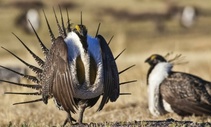
Interior Works with Partners to Improve 600,000 Acres of Sage-Grouse Habitat in Southwest Idaho
In an effort to improve the habitat for Greater Sage-Grouse in the West, the U.S. Department of the Interior issued a Record of Decision for the treatment of 617,000 acres of land in Owyhee County, Idaho. The decision is supported by the Bruneau-Owyhee Sage-Grouse Habitat Project Final Environmental Impact Statement, which analyzes the effects of removing encroaching Western juniper on approximately 617,000 acres of public land within a 1.67 million-acre area of sagebrush-steppe habitat in Owyhee County. (DOI news release)
|

CDFW Magnifies Efforts to Recruit Hunters and Anglers
In an effort to get more Californians involved in fishing, hunting and outdoor recreation, the California Department of Fish and Wildlife is partnering with the recreational fishing and hunting communities, state and federal agencies, and others to address barriers and opportunities to hunting and fishing in the state. (CDFW News)
|

The Fish Doctor
She wanted to work with people – be a nurse, maybe even a doctor. Then, a college course about salmon – in the wild, not on the plate – changed Kimberly True’s life. The future of the 1980s college student took a hard turn, abandoning a potential career in human health to pursue one devoted to raising healthier fish. “I got really excited about them and thought they were amazing creatures,” she said, describing the salmon’s lengthy trek to the ocean and its marathon return riddled with obstacles. “They really work very hard to survive.” The U.S. Fish and Wildlife Service scooped her up after she finished her biochemistry degree, assigning her to one of the agency’s fish health centers in the Pacific Northwest. The 30-year career that followed has focused on support and diagnostics for federal hatcheries raising and releasing salmon and other fish in California, Nevada and Washington. (USFWS Pacific Southwest Region blog)
|
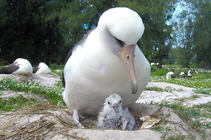
Albatross Wisdom is a New Mom Again
Wisdom, a Laysan albatross and world’s oldest known banded wild bird, hatched another chick recently at Midway Atoll National Wildlife Refuge and Battle of Midway National Memorial. She is at least 68 years old, has raised more than 30 chicks in her lifetime. (USFWS Open Spaces blog)
|
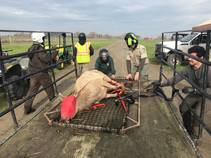
Wild Ride: 60 Tule Elk Moved to the Carrizo Plain — Using a Net Gun and a Helicopter
California wildlife managers recently undertook an adventurous, high-flying roundup, plucking 60 tule elk from the San Luis National Wildlife Refuge near Merced and moving them nearly 200 miles to the Carrizo Plain National Monument in San Luis Obispo County. The massive effort required dozens of people, a helicopter, a net gun and a livestock trailer. It’s part of the California Department of Fish and Wildlife’s efforts to manage the species that was once thought extinct after gold miners and settlers nearly wiped them out. How the remaining native elk population grew from a lone herd on a private ranch near the Kern County town of Buttonwillow in 1874, to what is now 6,000 wild tule elk wandering the state in 22 herds is “one of the real, great wildlife success stories in America,” said Peter Tira, a public information officer with Fish and Wildlife. (San Luiso Obispo Tribune)
Related: California Department of Fish and Wildlife Elk Management Program (CDFW website)
|
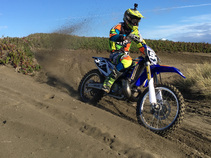
BLM Seeks Comments on 2019 Off-Highway Vehicle Recreation Proposals
The Bureau of Land Management invites the public to comment on its California State Parks, Off-Highway Motor Vehicle Recreation Division, off-highway vehicle recreation proposals for 2019, which are available on the Internet for review and comment from March 5 to May 6 at www.ohv.parks.ca.gov. Approximately 30 projects throughout the state have been proposed, including OHV rules enforcement, operation and maintenance, restoration work and other activities. The proposals are funded through the Grants and Cooperative Agreements Program, sponsored by the state of California, which provides financial assistance to cities, counties, districts, federal and state agencies, educational institutions, federally recognized Tribes and nonprofit entities. (BLM news release)
|

King of the Hammers 2019
King of the Hammers is considered the toughest one-day off-road race in the world. It is the largest off-road race event in North America in terms of both competitors and spectators. It combines desert racing and rock crawling, and has expanded from one race to a series of five races held throughout the week that take place each February on BLM-managed public lands in Johnson Valley, California. The King of Hammers off-road race is the second largest special recreation permit issued by the BLM and attracts approximately 50,000 spectators during the nine-day event. See below for photos from this year's event. (Event photos on the BLM California Flickr) Look up #KOH2019 on Facebook and Twitter for highlights!
Related: KOH week and results (Ultra4 Racing website)
Related: Access to public lands makes events like King of the Hammers possible (Victorville Daily Press)
|

A Bipartisan Effort to Protect Desert
Republicans and Democrats disagree on a lot of issues, but protecting desert areas in Southern California doesn’t seem to be one of them. Legislation was introduced this month in both chambers of Congress, by members of both major parties, with the goal of protecting 716,000 acres of regional desert, adding a swath nearly as big as Rhode Island to regional land that’s already under protection. New protected zones would include off-highway vehicle recreation areas and wilderness, and an expansion of several National Parks. The identical bills, sponsored by Rep. Paul Cook, R-Apple Valley, in the House of Representatives and California Sen. Dianne Feinstein, a Democrat, in the Senate, are the result of years of work with the off-roading community, conservationists and local governments. For different reasons, all of those interests want to see the protections in place. (Victorville Daily Press)
|
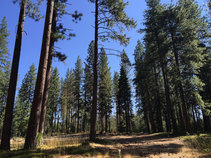
BLM to Conduct Pile Burning in Calaveras County
The Bureau of Land Management will be conducting a prescribed burn of roughly 20 piles of brush and tree limbs located on approximately 40 acres of public lands in the Lily Gap project area, near the town of West Point in Calaveras County. Burn operations may start as early as Tuesday, Feb. 12, depending on weather and air quality conditions. The communities of Barton, Glenco, Pioneer, Volcano, West Point and Wilseyville may see smoke. (BLM news release)
|
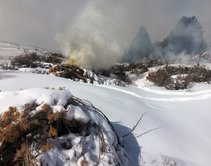
Pile Burning in Northeast California
Scenes of fire and ice are playing out on the public lands managed by our Applegate Field Office in northeast California and far northwest Nevada. Fire crews are taking advantage of the calm between winter storms to burn piles of juniper trees taken down in projects to improve habitat quality of sage steppe ecosystems. Removal of the encroaching trees helps create more diverse plant communities important for wildlife including greater sage-grouse. These improvements also improve forage for permitted livestock. This project is underway near 49er Mountain east of Cedarville.Scenes of fire and ice are playing out on the public lands managed by our Applegate Field Office in northeast California and far northwest Nevada. Fire crews are taking advantage of the calm between winter storms to burn piles of juniper trees taken down in projects to improve habitat quality of sage steppe ecosystems. Removal of the encroaching trees helps create more diverse plant communities important for wildlife including greater sage-grouse. These improvements also improve forage for permitted livestock. This project is underway near 49er Mountain east of Cedarville. (BLM California Facebook)
|

AmeriCorps Volunteers Help Hopland Research Center After Wildfires
Team members with the national service program AmeriCorps have spent the last few months working with the Hopland Research Center to recover from the Mendocino Complex Fire and other projects. The seven members at the Research Center are part of the Bureau of Land Management Specialty team for the AmeriCorps NCCC. The AmeriCorps NCCC program is a full-time, residential program that has people ages 18-24 travel across the country for a year helping out local communities in different areas. (The Ukiah Daily Journal)
|

Interior Launches New Effort to Facilitate Broadband Development in Rural America
In response to President Trump’s strategy to enhance broadband access in rural America, the U.S. Department of the Interior launched a new effort designed to increase broadband internet access on federally-managed lands. The report and accompanying website provide information on communications uses and existing assets that can be leveraged to expand services for rural and underserved communities throughout the United States through the bureaus and agencies within the Department. (DOI news release)
|
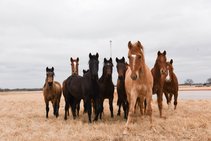
BLM Seeks Nominations for National Wild Horse and Burro Advisory Board
The Bureau of Land Management is seeking nominations to fill three positions on its National Wild Horse and Burro Advisory Board. Selected Board members advise the BLM and U.S. Forest Service from the perspective of a particular interest in wild horse and burro management. The call for nominations released today is for the positions that represent humane advocacy, livestock management and wildlife management interests. (BLM news release)
|

Walk in the footsteps of Abraham Lincoln
Abraham Lincoln is remembered as one of our nation’s greatest presidents. His thoughtful leadership guided us through the Civil War and kept our country together. He was a powerful voice for freedom and equality. Beyond a surprising conservation legacy, connections to our 16th president are felt across the country and at the Interior Department. Check out some of the public lands dedicated to sharing President Lincoln’s life and legacy. (DOI blog)
|

Exploring African American Heritage
Join us in celebrating Black History Month. As part of Interior's mission, the National Park Service and the U.S. Fish and Wildlife Service preserve and interpret important places that teach us about our nation’s history and culture, so that future generations can learn from the past. The many African American heritage sites protected and maintained by the National Park Service and U.S. Fish and Wildlife Service honor the contributions African Americans made to the nation. To help celebrate Black History month, explore some of these historic sites online and in person. (DOI website)
Related: Set in Stone: The legacy and church of Dr. Ralph David Abernathy (DOI blog)
Related: First African-American Smokejumpers Take their Last Jumps (USDA blog)
Related: Holt Collier, An Inspirational Outdoorsman (USFWS National Wildllife Refuge System feature)
|
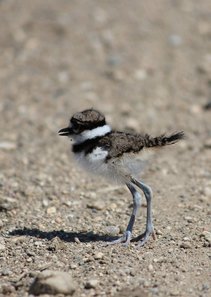
True of False
Mother killdeer will distract predators from their young by pretending to have a broken wing and limping in the opposite direction of their nest.
Keep scrolling to find out!
|

March 3, April 7 and May 5: Story Time and Young Explorers at Santa Rosa and San Jacinto Mountains National Monument
Story Hour for children ages 5 to 7: Join us in our Kid’s Corner to hear a story about nature and creatures that live in the desert of the Santa Rosa and San Jacinto Mountains National Monument. Reading will be followed by an indoor or outdoor arts and crafts activity.
Young Explorers for ages 8 and above: Compass and maps are a very important part of your 10 essentials when hiking in the desert. Let’s explore and have fun learning about them!
RSVP required. Event will take place from 1 to 2 p.m. Please visit www.desertmountains.org/calendar or call (760) 862-9984 for more information.
|

Ongoing: Bring Home a Wild Horse or Burro
The BLM Wild Horse and Burro Program is excited to announce nearly 70 events this year as part of BLM's efforts to find good homes for our nation's wild horses and burros. Known for their intelligence, endurance and loyalty, wild horses and burros, with the right training, are outstanding for trail riding, packing, working and have successfully competed for awards in numerous fields from endurance riding to dressage. With more than 81,000 wild horses and burros on BLM-managed public lands, these wild icons of our American history need your help more than ever. Without any natural predators that can control population growth, wild horse and burro herds grow rapidly on the range and can quickly overcome the land's ability to support them. The BLM works to maintain healthy wild herds by gathering excess animals and placing them into good homes. (BLM website)
|
|
WILDLIFE QUESTION OF THE WEEK ANSWER
True! Now that is love.
Often seen in dry, flat landscapes, running and halting on the ground in search of insects and earthworms. Although the Killdeer is common around human habitation it is often shy, at first running away rather than flying. When a Killdeer stops to look at an intruder, it has a habit of bobbing up and down almost as if it had hiccupped. Near the nest, Killdeer distract predators by calling loudly, bobbing and running away. Killdeer are some of the best-known practitioners of the broken-wing display, an attempt to lure predators away from a nest by feigning injury. Pairs of Killdeer tend to stay together for one to a few years. (All About Birds, Killdeer Life History via The Cornell Lab of Ornithology)
|
|
|
News.Bytes
is a publication of the Bureau of Land Management in California.
Bureau of Land Management
California State Office
2800 Cottage Way, Suite W1623
Sacramento, CA 95825
(916) 978-4600
Send comments to the News.Bytes Team | Subscribe to
News.Bytes | Unsubscribe
|
     
|
|
|